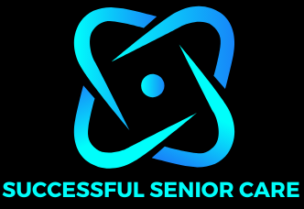
What makes Pinterest different than other search engines?
While it’s becoming increasingly acknowledged that Pinterest is actually a search engine, it’s unique in many ways. Users come to Pinterest with specific goals in mind, looking for ideas and inspiration for different aspects of their lives.
Pinterest differs from traditional search engines in several key ways:
Visual Search: Unlike text-based search engines like Google or Bing, Pinterest emphasizes visual content discovery. Users can search for images or videos using keywords or by uploading an image, allowing them to find visually appealing content related to their interests.
Curation and Inspiration: Pinterest is designed for users to curate collections of images and videos, known as “pins,” onto themed boards. This emphasis on curation and organization enables users to discover inspiration and ideas related to various topics, from home decor to recipes to travel destinations.
User-Generated Content: Pinterest relies heavily on user-generated content, with millions of users creating and sharing pins on a wide range of topics. This user-driven approach fosters a sense of community and encourages engagement through likes, comments, and repins.
Personalization: Pinterest leverages algorithms to personalize the user experience based on individual preferences, search history, and engagement patterns. This personalized approach helps users discover content that is relevant and tailored to their interests, enhancing the overall user experience.
Shopping Integration: Pinterest integrates e-commerce features that allow users to shop directly from pins, making it a valuable platform for businesses to showcase products and drive sales. Users can discover products they’re interested in and seamlessly make purchases without leaving the platform.
Longevity of Content: Unlike traditional search engines where content may become outdated or buried in search results over time, Pinterest content has a longer lifespan. Pins can continue to surface in users’ feeds and search results months or even years after they are originally pinned, providing a sustained opportunity for discovery and engagement.

The demographics of Pinterest users
Understanding who is on Pinterest can help with your advertising strategy. The majority of Pinterest users are women. Currently there are 59 million female Pinterest users in the United States and 32.6 million male users. Overall, 69.5% of global Pinterest users are female.
A recent report studying Pinterest users by age shows that the age range with the highest number of Pinterest users is 25 to 34. As many as 30% (or close to one in three) of Pinterest users worldwide fall into this category.
Breaking this down further, this age group is made up of 20.4% of females and 7.1% of males. The remaining 2.5% do not identify with either. In other words, around one out of every five active Pinterest users is a female aged between 25 and 34.
The second-largest age group to which Pinterest users belong is the 18–24 range. More than one in four (28%) Pinterest users are in this category. What this breakdown of the age demographics of Pinterest users shows is that the large majority of them (58%) are aged 18 to 34.
This is followed by the 35–44 category, which 17.5% of Pinterest users fall into. The 45–54 and 55–64 age ranges follow, with 11.4% and 8.5%, respectively.
The average age of a family caregiver is 49 predominantly female. Many of those under the age of 49 care for grandparents and their own children. These individuals also make up most of the formal/paid caregivers and use Pinterest to identify new careers opportunities.

The pros and cons of advertising senior care services on Pinterest
Pros:
Visual Appeal: Pinterest is inherently visual, making it an ideal platform for showcasing senior care facilities, services, and amenities. High-quality images and videos can effectively capture the attention of users and convey the essence of your business, fostering engagement and interest.
Targeted Audience: Pinterest allows businesses to target specific demographics, interests, and behaviors, enabling senior care providers to reach older adults, caregivers, and family members who are actively seeking information and resources related to aging and healthcare.
Inspiration and Education: Many Pinterest users turn to the platform for inspiration and ideas, whether it’s for home decor, meal planning, or caregiving tips. By creating content that educates and informs, senior care businesses can position themselves as valuable resources within the community, establishing trust and credibility.
Community Building: Pinterest fosters a sense of community among its users through features like group boards and comments. Senior care businesses can leverage these features to engage with their audience, facilitate discussions, and build relationships with potential clients and referral sources.
SEO Benefits: Pinterest acts as a search engine in itself, allowing businesses to optimize their content for relevant keywords and phrases. By incorporating strategic keywords into their pins, descriptions, and boards, senior care providers can improve their visibility on the platform and attract organic traffic.
Longevity of Content: Unlike other social media platforms where posts quickly fade into obscurity, Pinterest content has a longer lifespan. Pins can continue to drive traffic and engagement months or even years after they are initially published, providing a lasting impact for senior care businesses.
Cons:
Time and Resource Intensive: Building and maintaining a presence on Pinterest requires significant time and effort. From creating compelling visual content to engaging with users and analyzing performance metrics, senior care businesses must allocate resources to effectively leverage the platform.
Limited Reach: While Pinterest boasts a sizable user base, it may not be as universally popular among older adults compared to platforms like Facebook or LinkedIn. As a result, senior care businesses may struggle to reach certain segments of their target audience who are not active on Pinterest.
Competition and Saturation: Pinterest is a crowded marketplace, with countless businesses vying for the attention of users. Senior care providers face stiff competition from other healthcare organizations, home care agencies, and related industries, making it challenging to stand out amidst the noise.
Complex Analytics: Pinterest’s analytics tools can be complex and overwhelming for novice users. Understanding metrics such as impressions, saves, and click-through rates requires a learning curve, and senior care businesses may struggle to interpret this data effectively to optimize their marketing efforts.
Limited Ad Formats: While Pinterest offers advertising options such as Promoted Pins and video ads, the platform’s ad formats may not be suitable for every senior care business. Certain types of services or facilities may not lend themselves well to visual advertising, limiting the effectiveness of paid campaigns.
Risk of Misrepresentation: In the visually-driven world of Pinterest, there is a risk that senior care businesses may inadvertently misrepresent their services or facilities through curated images and content. It’s essential for businesses to ensure that their marketing materials accurately reflect the reality of their offerings to avoid potential backlash or legal issues.
In Conclusion:
Choosing your advertising methods require strategy. Social media platforms offer opportunities that traditional advertising methods through print do not. Deciding which social media platforms best align with your company’s goals requires careful consideration. Pinterest is one of the many options with opportunities and drawbacks. If you are looking for a social media consultation, call me and I can suggest some professionals who can support your companies goals: 440-212-4987.
